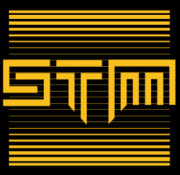macOS Bundles
Reading time: 3 minutes
tip
Learn & practice AWS Hacking: HackTricks Training AWS Red Team Expert (ARTE)
HackTricks Training AWS Red Team Expert (ARTE)
Learn & practice GCP Hacking:  HackTricks Training GCP Red Team Expert (GRTE)
HackTricks Training GCP Red Team Expert (GRTE)
Support HackTricks
- Check the subscription plans!
- Join the 💬 Discord group or the telegram group or follow us on Twitter 🐦 @hacktricks_live.
- Share hacking tricks by submitting PRs to the HackTricks and HackTricks Cloud github repos.
Basic Information
Bundles in macOS serve as containers for a variety of resources including applications, libraries, and other necessary files, making them appear as single objects in Finder, such as the familiar *.app files. The most commonly encountered bundle is the .app bundle, though other types like .framework, .systemextension, and .kext are also prevalent.
Essential Components of a Bundle
Within a bundle, particularly within the <application>.app/Contents/ directory, a variety of important resources are housed:
- _CodeSignature: This directory stores code-signing details vital for verifying the integrity of the application. You can inspect the code-signing information using commands like: %%%bash openssl dgst -binary -sha1 /Applications/Safari.app/Contents/Resources/Assets.car | openssl base64 %%%
- MacOS: Contains the executable binary of the application that runs upon user interaction.
- Resources: A repository for the application's user interface components including images, documents, and interface descriptions (nib/xib files).
- Info.plist: Acts as the application's main configuration file, crucial for the system to recognize and interact with the application appropriately.
Important Keys in Info.plist
The Info.plist file is a cornerstone for application configuration, containing keys such as:
- CFBundleExecutable: Specifies the name of the main executable file located in the
Contents/MacOSdirectory. - CFBundleIdentifier: Provides a global identifier for the application, used extensively by macOS for application management.
- LSMinimumSystemVersion: Indicates the minimum version of macOS required for the application to run.
Exploring Bundles
To explore the contents of a bundle, such as Safari.app, the following command can be used: bash ls -lR /Applications/Safari.app/Contents
This exploration reveals directories like _CodeSignature, MacOS, Resources, and files like Info.plist, each serving a unique purpose from securing the application to defining its user interface and operational parameters.
Additional Bundle Directories
Beyond the common directories, bundles may also include:
- Frameworks: Contains bundled frameworks used by the application. Frameworks are like dylibs with extra resources.
- PlugIns: A directory for plug-ins and extensions that enhance the application's capabilities.
- XPCServices: Holds XPC services used by the application for out-of-process communication.
This structure ensures that all necessary components are encapsulated within the bundle, facilitating a modular and secure application environment.
For more detailed information on Info.plist keys and their meanings, the Apple developer documentation provides extensive resources: Apple Info.plist Key Reference.
tip
Learn & practice AWS Hacking: HackTricks Training AWS Red Team Expert (ARTE)
HackTricks Training AWS Red Team Expert (ARTE)
Learn & practice GCP Hacking:  HackTricks Training GCP Red Team Expert (GRTE)
HackTricks Training GCP Red Team Expert (GRTE)
Support HackTricks
- Check the subscription plans!
- Join the 💬 Discord group or the telegram group or follow us on Twitter 🐦 @hacktricks_live.
- Share hacking tricks by submitting PRs to the HackTricks and HackTricks Cloud github repos.
 HackTricks
HackTricks